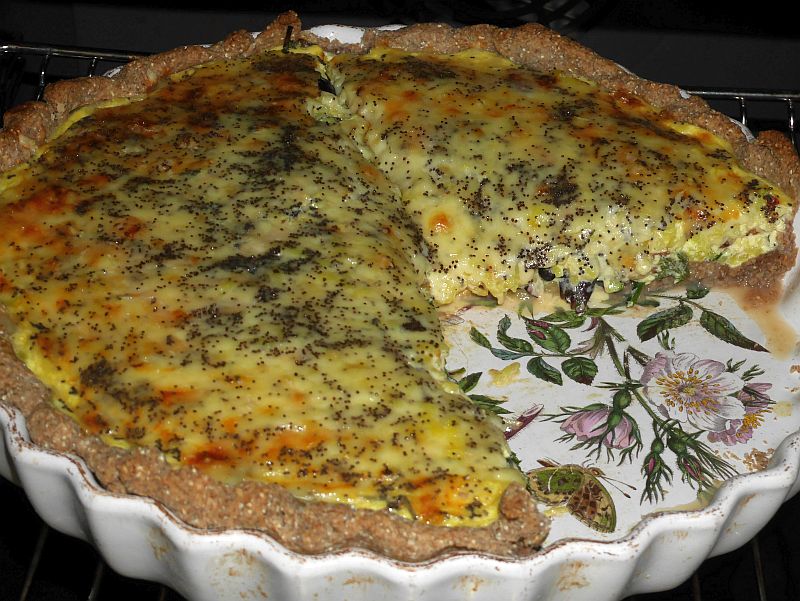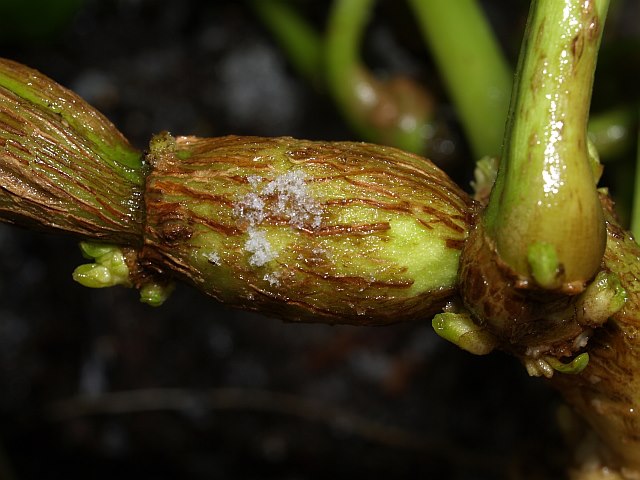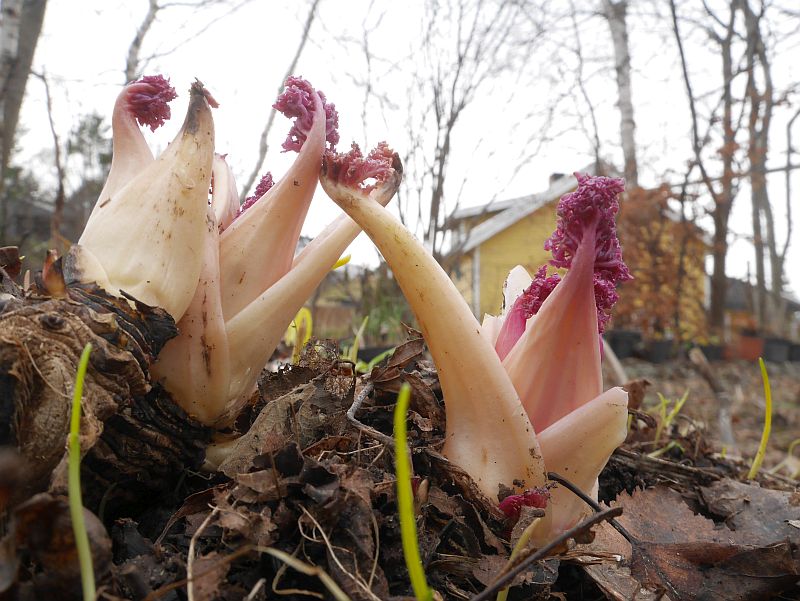We put the clocks forward last night. It’s now Summer Time! However, nature is thinking otherwise and from flowering crocus, snowdrops and wild Hepatica nobilis (blåveis) everything is white this morning!
Monthly Archives: March 2020
27th March Veggies from the garden
Tonight we made a quiche (eggepai) with these vegetables:
Allium nutans (Siberian nodding onion)
Allium cernuum (nodding onion / prærieløk)
Dystaenia takesimana (Giant Ulleung Celery)
Brassica oleracea (Perennial kale / flerårige kål)
Allium paradoxum
Allium oleraceum
Alliaria petiolata (hedge garlic / løkurt)
Angelica archangelica (Voss Angelica / Vossakvann)
Myrrhis odorata (Sweet cicely / spansk kjørvel)
Tragopogon pratensis shoots ( Jack-go-to-bed-at-noon / geitskjegg)
Carum carvi (caraway / karve)
Aegopodium podograria (ground elder / skvallerkål)
Hablitzia tamnoides (Caucasian spinach / stjernemelde)
Taraxacum officinale (dandelion / løvetann)
Rumex acetosa (sorrel / engsyre)
Smyrnium olusatrum (Alexanders / sorte løpstikke)

Mauka in Malvik, Bergen and Belgium
(Norsk forklaring nedenfor)
Mauka (Mirabilis expansa) is a root vegetable grown, amongst others by the Maukallajta Indians in the Andes and I cultivated it for the first and only time outdoors in Malvik in 2012 with seed from Owen Smith … and it grew vigorously laterally (therefore the epithet expansa) and I even got a harvest! Unfortunately, I can’t remember tasting the roots and think that they simply rotted in store before I could try them. But, I did eat the leaves in a salad.
Below you will find an album of pictures from my trial in 2012 (I later tried twice with seeds from Bergen Botanical Garden but did not get germination). In Bergen Botanical Garden, I saw a lush plant at Milde on October 22, 2014 (in the collection of vegetables from the Andes) and the next day I was surprised to find it in the rock garden at the Museumsplassen (pictures from Bergen are in a separate album below)!
Norsk: Mauka (Mirabilis expansa) er en rotgrønnsak dyrket bl.a. av Maukallajta indianerne i Andesfjellene og jeg dyrket den for første og eneste gang på friland i Malvik i 2012…og den vokste utrolig mye sideveis (derfor epiteten expansa) og jeg fikk faktisk noe å høste (jeg hadde ingen tro etter dårlige erfaringer med andre planter fra Andesfjellene)! Jeg kan dessverre ikke huske at jeg smakte på røttene og tror at de rett og slett råtnet før jeg kunne prøve. Men, jeg spiste bladene i en salat.
Nedenfor finner dere bilder fra mitt forsøk i 2012 (jeg prøvde senere to ganger med frø fra Bergen Botaniske Hage, men fikk ingen spiring). I Bergen har jeg sett en frodig plante på Milde 22. oktober 2014 (i samlingen av grønnsaker fra Andesfjellene) og neste dag var jeg overrasket å finne den i fjellhagen på Museumsplassen (bilder fra Bergen i en separat album nedenfor!
I first saw Mauka in the “flesh” on 10th October 2008 when I visited Frank van Keirbilck’s garden in Scheldewindeke, Belgium (I met Frank and mauka through the Homegrown Goodness forum). I call his garden “Andes in Flanders)! Here are a couple of pictures from Frank’s garden that day:
Pictures from Bergen in 2014:
25th March Veggies
These delicious fresh perennial vegetables were added tonight’s dal towards the end
Aegopodium podograria (ground elder; skvallerkål)
Allium cernuum (nodding onion; prærieløk)
Brassica oleracea (perennial kale; flerårige kål)
Ficaria verna (lesser celandine; vårkål)
Alliaria petiolata (garlic mustard; løkurt)
Hablitzia tamnoides (Caucasian spinach; stjernemelde)
Taraxacum officinale ( dandelion; løvetann) Forced and blanched in the cellar with flower buds now forming
Myrrhis odorata (sweet cicely; spansk kjørvel)
An Aristocratic Vegetable
Sea kale Crambe maritima is sometimes referred to as the King of the Vegetables (Queen is perhaps more fitting!) . This is partly due to the fact that it was in the past cultivated in heated greenhouses for nobility in the UK for Christmas! Maybe not the King, it is certainly an aristocrat and the easiest perennial brassica in cold climates (along wtih even hardier Crambe cordifolia) as it is hardier than perennial kales as it resprouts from the roots every spring and can easily be covered by a mulch of leaves or suchlike in colder climates. I do this every autumn just in case we have a very cold winter (I have experienced plants to resprout from deep roots when the surface roots have been killed in winter). I would normally take off the leaf mulch early April, but this winter it’s been so mild I removed it a few days ago and the plant had already put out delicious sprouts…I’ve been snacking on them! My oldest sea kale is approaching 40 years old, but hasn’t appeared yet (oldies sleep longer I guess!). Much more about Sea Kale in my book Around the World in 80 plants or by searching here: https://www.edimentals.com/blog/?s=sea+kale
They are also beautiful. The pictures show the cultivar Lily White which is only about 8 years old.
Giant Ulleung Celery
In my world, plants that are both perennial, edible, ornamental and popular with pollinating insects are the most valuable (I term this class of plants edi-ento-mentals) and the Giant Ulleung Celery, Dystaenia takesimana, ticks all 3 boxes! That it can provide winter greens at a time of year when little else is available is its biggest advantage as an edible plant! This plant has been a closely guarded secret amongst a selected few for many years, but is now poised for the big(ger) time! The fact that I’ve written the article below about this plant is thanks to one man, plant breeder Professor Elwyn Meader (1910-1996) who collected seed on its small home island of Ulleung-do in the East Sea between the Korean peninsular and Japan in 1953! Without his generosity and enthusiasm 30 or so years ago to share seeds, we wouldn’t know about one of the potentially most useful permaculture plants! Please download the article below and seek out plants and seed!
The photo below of a flowering Giant Ulleung Celery at Eric Toensmeier’s home Paradise Lot in Holyoke, Massachusetts is courtesy of Jonathan Bates, who’s in the picture too.

19th March Veggies
Continuing my series of veggies harvested from the garden. this time used in a baccalao with parsnip (pastinakk), potato (potet), bulb onions .(kepaløk), Jerusalem artichokes (jordskokk), (bought) organic tomatoes and chili. Greens used from the garden:
Urtcia dioica (nettles/brennesle)
Aegopodium podograria (ground elder/skvallerkål)
Hablitzia tamnoides (Caucasian spinach/stjernemelde)
Rumex patientia (patience dock/hagesyre)
Taraxacum officinale dandichokes (dandelion /løvetann)
Ficaria verna (lesser celandine/vårkål)
Allium sativum shoots (garlic/hvitløk)


First geese
The first pinkfeet (geese) / kortnebbgås passing over last night!
Dawn chorus of one: 23rd March 2020
A woodpigeon (ringdue) singing the dawn in this morning.

Parsnip men!
When my kids were young I made up a now legendary (in our family at least) story that I told them at bedtime about the Potato Men….potatoes that lifted themselves out of the ground at night in our garden and how they invaded the local area….
Well, it seems that there’s a parsnip men story in the making too….caught these in the garden about to escape! (or it could just be frost heave in the course of the winter!)
































